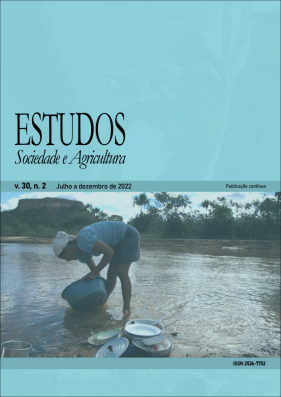Differential dimensions of peasant engagement in babassu palm nut extraction
DOI:
https://doi.org/10.36920/esa-v30-2_04Keywords:
agricultural census, traditional communities, gender, sociobiodiversityAbstract
Recent official statistics reveal drastic reductions in the production of babassu palm nuts and in the numbers of the workers known as babassu nut breakers, who supply one of Brazil’s most important products of sociobiodiversity to an industry that currently faces a pronounced crisis. Accurate estimates of the population affected by this crisis are key for assessing economic and social impacts. This article examines different dimensions of engagement in babassu extractivism, discusses complementary hypotheses to understand the decrease in this activity, and outlines methodology to estimate current levels in order to improve policies for strengthening the regional economy, local livelihoods, and activities by social movements. Some 62,000 people in 50,000 households break babassu palm nuts in 356 municipalities; of these, approximately 40,000 extractivists in 32,000 households sell the resulting nut kernels, a figure obtained by projecting adjusted rates of engagement in this activity determined through field surveys in Maranhão’s Mearim Valley, the region of Brazil with the highest babassu palm production.
elocation-id: e2230204
Received: Apr.30.2022 • Accepted: Sep.16.2022 • Published: Oct.6.2022
Original article / Double blind peer review / Open access
Downloads
Downloads
Published
Issue
Section
License
Copyright (c) 2022 Roberto Porro

This work is licensed under a Creative Commons Attribution 4.0 International License.
Authors who publish in this journal agree to the following terms:
a) Authors maintain the copyright and grant the journal the right of first publication, with the work simultaneously licensed under the Creative Commons Attribution License which allows the sharing of the work with acknowledgment of authorship and initial publication in this journal.
b) Authors are authorized to take additional contracts separately, for non-exclusive distribution of the version of the work published in this journal (eg publish in institutional repository or as a book chapter), with acknowledgment of authorship and initial publication in this journal.
c) Authors are allowed and encouraged to publish and distribute their work online (eg in institutional repositories or on their personal page) at any point before or during the editorial process, as this can generate productive changes, as well as increase the impact and citation of published work (See The Effect of Free Access).






